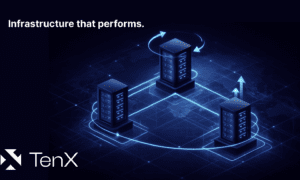Introduction:
In recent years, the global landscape of cybersecurity has witnessed a surge in ransomware attacks. These malicious incidents not only threaten the integrity of sensitive data but also pose significant financial risks to individuals and organizations alike. As the prevalence of ransomware continues to rise, it becomes imperative to adopt proactive strategies for effective cybersecurity. This article explores the evolving nature of ransomware attacks and provides actionable strategies to fortify your defenses against this growing threat.
Understanding the Escalation of Ransomware Attacks:
Before delving into effective cybersecurity strategies, it is crucial to comprehend the escalating nature of ransomware attacks. Short sentences emphasize the urgency of the situation. Ransomware is a type of malicious software designed to encrypt files or lock users out of their systems, rendering them inaccessible. Cybercriminals then demand a ransom, usually in cryptocurrency, in exchange for restoring access or decrypting the compromised data. The sophistication of these attacks has evolved, with threat actors targeting individuals, businesses, and even critical infrastructure.
Transitions to Regularly Backup Your Data:
One of the foundational strategies for combating ransomware is to regularly backup your data. Transition words like “firstly” can highlight the primary importance of this step. Ensure that your backups are stored in secure and isolated environments, disconnected from the network. Regular backups enable you to restore your data without succumbing to ransom demands, providing a critical layer of defense against data loss.
Utilize Robust Antivirus and Anti-Malware Solutions:
Short, impactful sentences underscore the need for proactive defense mechanisms. Invest in robust antivirus and anti-malware solutions to detect and prevent ransomware infections. Transition words like “additionally” can emphasize the supplementary nature of these solutions. Ensure that your security software is regularly updated to recognize and neutralize evolving threats. Real-time scanning and heuristic analysis can identify suspicious activities and prevent ransomware from gaining a foothold.
Secure Your Email and Web Browsing Practices:
Email remains a common vector for ransomware distribution. Short sentences convey the importance of securing this communication channel. Avoid clicking on links or downloading attachments from unknown or suspicious emails. Transition words like “moreover” can underscore the additional considerations in web browsing practices. Be cautious while visiting unfamiliar websites, as malicious advertisements and compromised web pages can serve as entry points for ransomware infections.
Transitions to Implement Network Segmentation:
Network segmentation is a crucial strategy to contain the spread of ransomware within an organization. Transition words such as “consequently” can emphasize the logical outcome of implementing this measure. Divide your network into segments, restricting access between them. In the event of a ransomware attack, segmentation limits the lateral movement of the malware, preventing it from compromising the entire network.
Conduct Regular Security Training for Employees:
The human element is often a vulnerability in the face of ransomware attacks. Short sentences convey the simplicity of this precaution. Conduct regular security training sessions for employees to educate them about the risks of ransomware and the importance of cybersecurity best practices. Transition words like “simultaneously” can highlight the dual benefit of educating employees and reinforcing a security-aware culture within the organization.
Transitions to Implement Least Privilege Access:
Least privilege access is a fundamental principle in cybersecurity. Transition words like “likewise” can underscore the shared nature of this precaution. Limit user access rights to only what is necessary for their roles. In the event of a ransomware attack, restricting user privileges mitigates the impact, preventing the malware from spreading to critical systems and sensitive data.
Regularly Update and Patch Software:
Software vulnerabilities are often exploited by ransomware attackers to gain unauthorized access. Short sentences emphasize the simplicity of this precaution. Regularly update and patch your operating systems, software, and applications to address known vulnerabilities. Transition words like “similarly” can underscore the parallel benefit of updating software and enhancing security.
Transitions to Monitor Network Traffic:
Monitoring network traffic is a proactive measure to detect unusual activities that may indicate a ransomware attack. Transition words like “consequently” can highlight the logical outcome of monitoring network traffic. Employ intrusion detection and prevention systems to analyze network packets for signs of ransomware activity. Anomalies in communication patterns can be identified, enabling swift response and containment.
Utilize Endpoint Detection and Response (EDR) Solutions:
Endpoints, such as desktops and laptops, are common targets for ransomware attacks. Short sentences drive home the importance of securing these devices. Implement Endpoint Detection and Response (EDR) solutions to monitor endpoint activities, detect suspicious behavior, and respond to potential threats. Transition words like “additionally” can emphasize the supplementary nature of EDR solutions in bolstering endpoint security.
Transitions to Develop an Incident Response Plan:
Preparation is key in mitigating the impact of a ransomware attack. Transition words such as “similarly” can underscore the parallel benefit of developing an incident response plan. Create a comprehensive incident response plan that outlines the steps to be taken in the event of a ransomware incident. This plan should include communication protocols, containment procedures, and data recovery strategies.
Invest in Cybersecurity Insurance:
As a last line of defense, consider investing in cybersecurity insurance. Short sentences emphasize the simplicity of this precaution. Cybersecurity insurance provides financial protection in the event of a ransomware attack, covering expenses related to data recovery, legal fees, and regulatory compliance. Transition words like “furthermore” can highlight the additional layer of security that cybersecurity insurance provides.
Conclusion:
Ransomware attacks continue to pose a significant threat to individuals and organizations. Adopting effective cybersecurity strategies is paramount in mitigating the risks associated with these malicious incidents. From regular data backups and robust security software to employee training, network segmentation, and incident response planning, a multi-layered approach is essential. Transition words guide you through these strategies, emphasizing the interconnected nature of a comprehensive cybersecurity defense. By implementing these proactive measures, you can strengthen your resilience against ransomware attacks and safeguard your digital assets in an increasingly complex threat landscape.



































